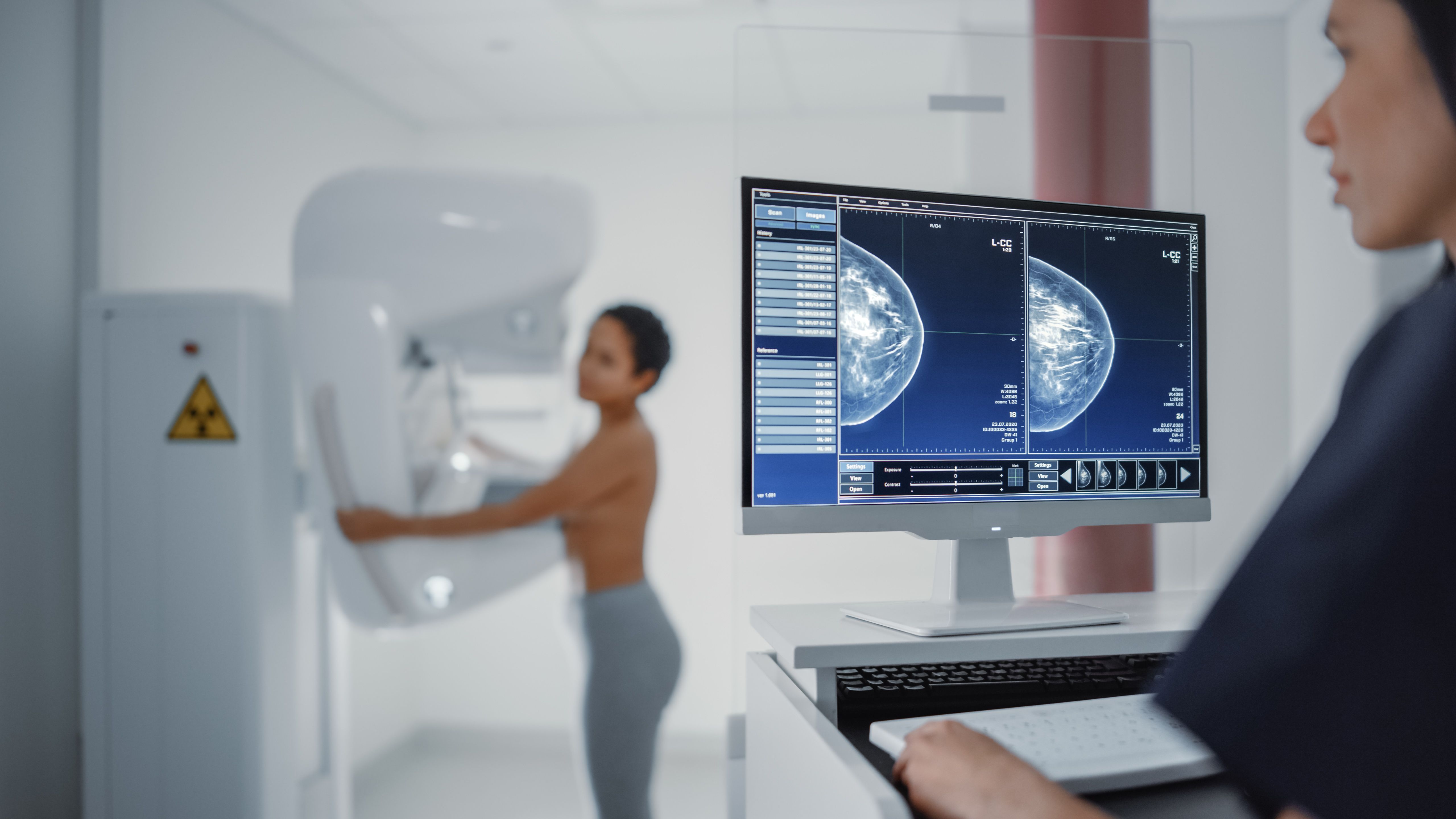- Center on Health Equity & Access
- Clinical
- Health Care Cost
- Health Care Delivery
- Insurance
- Policy
- Technology
- Value-Based Care
AI-Enhanced Mammograms Reduce False Negative Breast Cancer Screening Results
AI-enhanced mammograms have potential to improve breast cancer screenings, facilitating early detection and empowering women's health decisions.
Mammograms, a tool used to detect breast cancer in women commonly age 50 years or older, have been used for more than 100 years, with modern and more frequent use dating back anywhere from 50 to 60 years. Now, with the evolution of modern technology and AI, mammograms have evolved to increase clarity and provide more detailed images and analysis of results.
SimonMed, one of the largest outpatient medical imaging providers in the US, recently introduced 2 AI-enhanced mammogram services: Mammogram+ and Mammogram+ Heart, which both aim to improve early detection and refine preventative medicine. Computer-aided detection (CAD) used during mammogram screenings dates to the 1990s, when the ImageChecker M1000 created by R2 Technology became the first FDA-approved CAD system for mammograms in 1998.1
AI-enhanced mammograms can potentially improve early detection. | Image Credit: Gorodenkoff - stock.adobe.com .jpeg

“At SimonMed Imaging, we’re focused on empowering women with the latest technology to take charge of their health,” said John Simon, MD, CEO and founder of SimonMed Imaging, in a press release. “Mammogram+ and Mammogram+ Heart combine advanced AI to detect breast cancer earlier and identify early signs of heart disease—offering valuable insight into both breast and heart health through a single exam.”
SimonMed partners with Lunit for Mammogram+, among their other AI partners, Therapixel and iCAD—which are now all FDA-cleared. In a written Q&A with Sean Raj, MD, SimonMed Imaging’s chief medical officer and chief innovation officer, and The American Journal of Managed Care®, Raj wrote that Lunit’s AI showed improved diagnostic accuracy and workflow efficiency. Lunit’s AI system achieved an area under the ROC curve of 0.956 for breast cancer detection, outperforming many other AI systems and some individual radiologists. Additionally, when combined, the AI improved sensitivity to 88.6% while maintaining a high specificity of 93%.2
“These enhancements translate into earlier cancer detection and a more streamlined, accurate workflow, both of which are key goals of SimonMed’s Mammogram+ platform,” Raj wrote.
The Mammogram+ and Mammogram+Heart utilize Lunit INSIGHT MMG, an AI-powered mammography detection system. The company has multiple versions of its AI cancer detection system; LUNIT INSIGHT CXR detects abnormal radiological findings in chest x-rays that assist with tuberculosis screenings and is also used in emergency rooms to assist triage and notify the presence of pre-specified suspected critical findings.3 Their updated version of Lunit INSIGHT MMG 2.0 is referred to as Lunit INSIGHT DBT, which, in a clinical trial conducted on 55,759 women in a prospective screening, showed that Lunit INSIGHT DBT performed better with 1 radiologist when compared with 2 radiologists.4
“AI-enhanced mammograms, like Mammogram+ and Mammogram+ Heart, help radiologists with an extra layer of decision support by offering a second read, improving cancer detection rates, and reducing false positives,” Raj wrote. “It also allows more personalized care through tools like automated breast density scoring and individualized breast health reports, which can guide risk-based screening strategies.”
Importantly, SimonMed has found AI particularly effective for women under 50, those with dense breast tissue, and high-risk populations such as women with a family history or genetic predisposition to breast cancer. In these groups, false negatives can drop by as much as 30% when AI is used as both an initial triage and a second read—helping overcome a significant challenge in detecting cancers in dense tissue.2
SimonMed was also one of the first providers to integrate FDA-cleared AI into 3D mammography, building on its history of innovation as the first to offer 3D mammograms at no additional cost in 2019. Raj noted that AI integration has improved the analysis of breast density, identification of subtle cancers, and overall accuracy—giving both patients and radiologists greater confidence in results.
“We have already seen a huge improvement with AI tools, and we will continue to incorporate AI into our systems to ultimately better patient health outcomes and save more lives,” Raj wrote.
Beyond current use, SimonMed is actively collecting long-term data to assess AI’s performance across different demographics and to track interval cancers, with the goal of improving diagnostic equity.
“Women deserve the best tools available when it comes to detecting disease early,” said Dr. Angela Fried, Director of Breast Imaging at SimonMed, in a press release. “With Mammogram+ and Mammogram+ Heart, we’re offering more than a scan—we’re delivering deeper insight, earlier intervention, and more empowered care.”
References
1. Resch D, Gullo RL, Teuwn J, et al. AI-enhanced mammography with digital breast tomosynthesis for breast cancer detection: clinical value and comparison with human performance. 2024;(6)4. doi:10.1148/rycan.230149
2. Kim HE, Kim HH, Han BK, et al. Changes in cancer detection and false-positive recall in mammography using artificial intelligence: a retrospective, multireader study. Published Online February 6, 2020. The Lancet. doi:10.1016/S2589-7500(20)30003-0
3. LUnit Insight CXR Triage. [Lunit] Lunit INSIGHT CXR Triage, an AI solution for chest x-ray triage. Accessed August 21, 2025. https://www.lunit.io/en/products/cxrt
4. Park EK, Kwak SY, Lee W, Choi JS, Kooi T, Kim EK. Impact of AI for digital breast tomosynthesis on breast cancer detection and interpretation time. Radiol Soc North Am. Published Online: Apr 3 2024. doi:10.1148/ryai.230318
